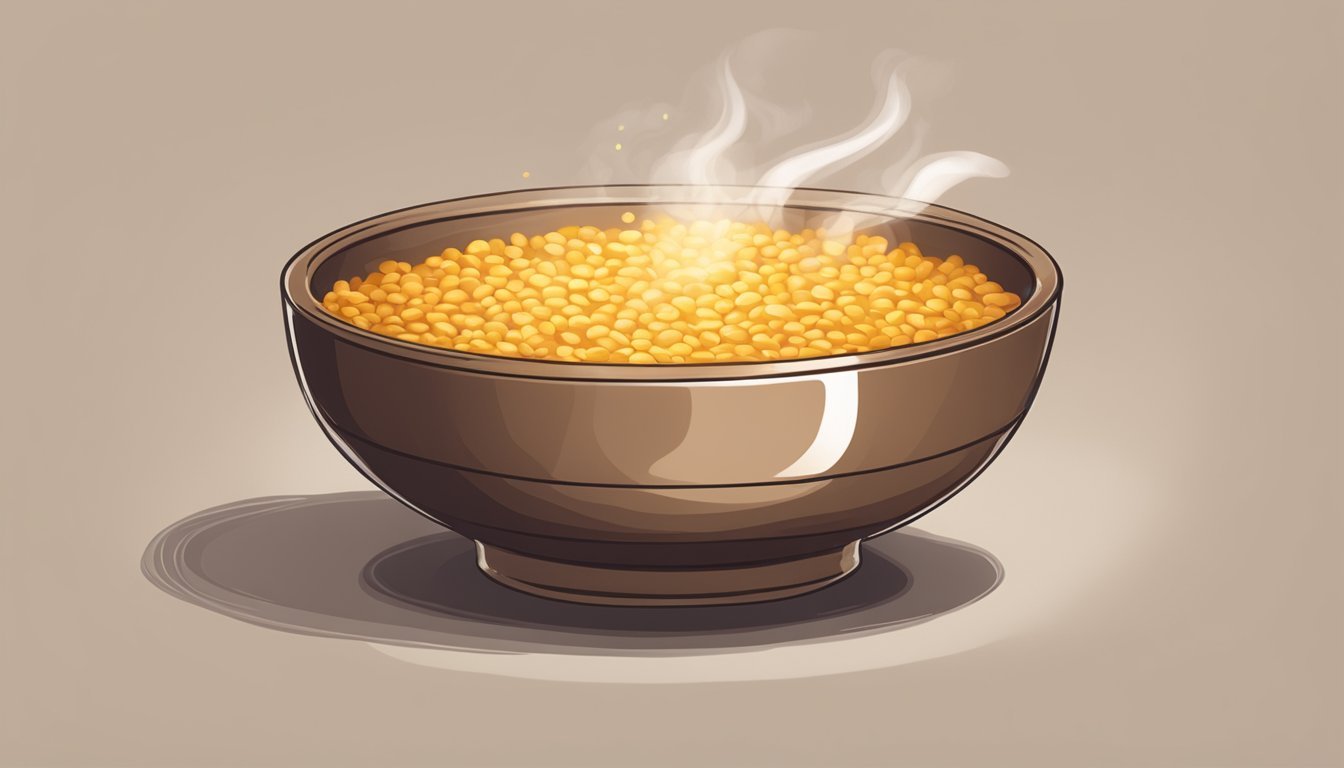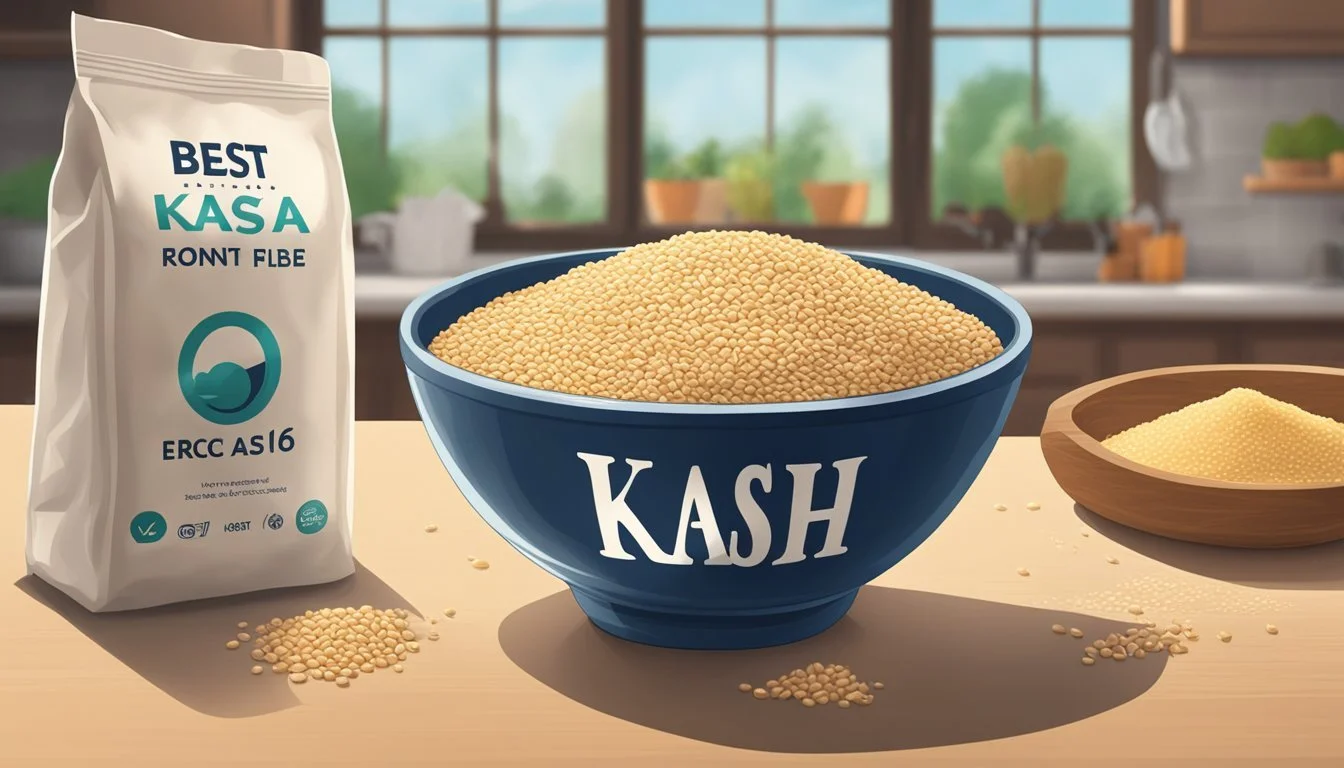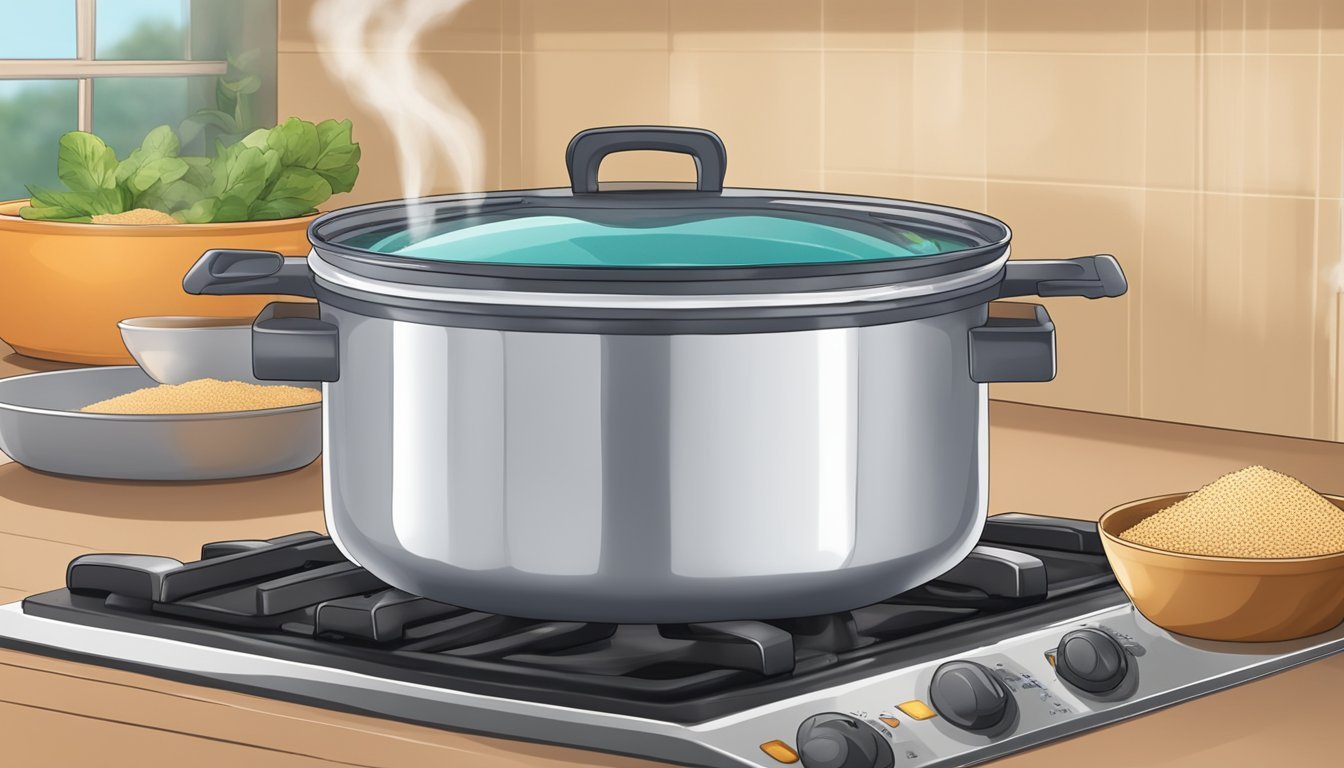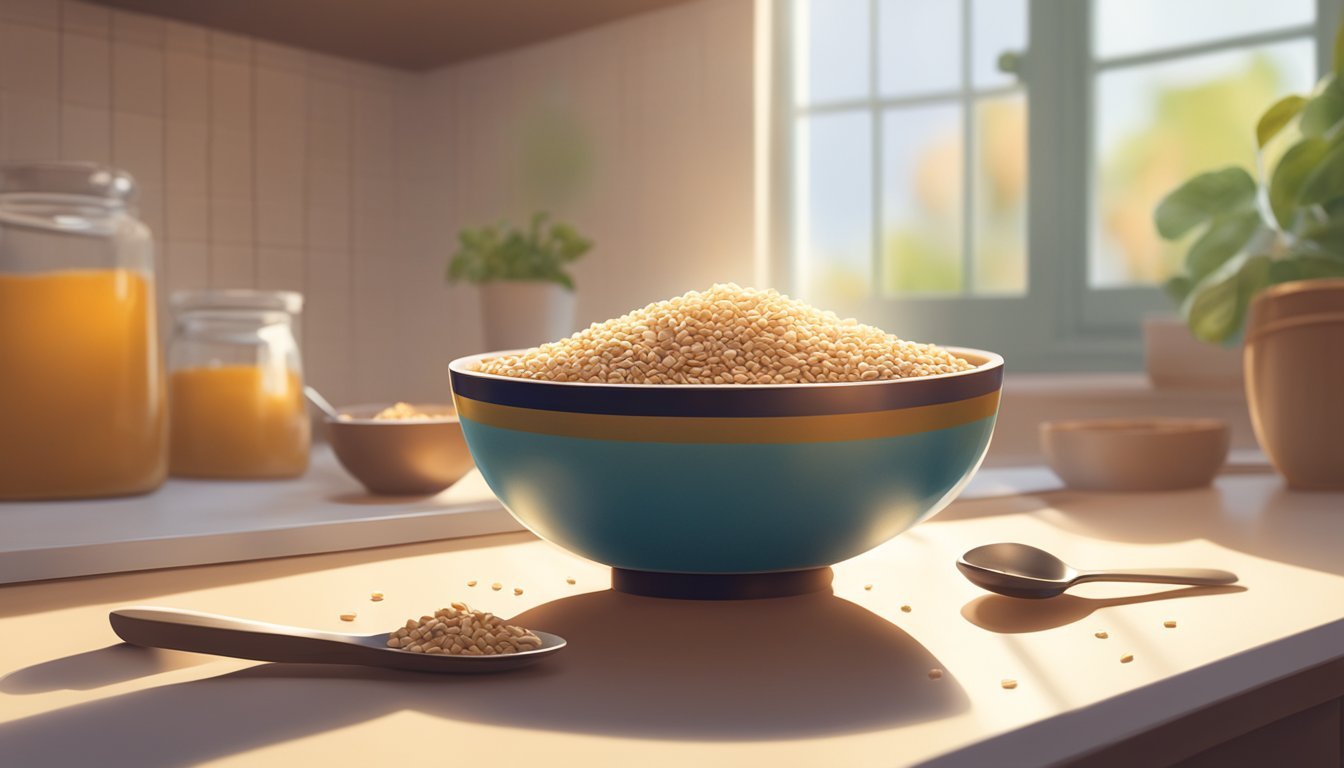How Long Does Kasha Last?
Shelf Life and Storage Tips
Kasha (how long does kasha last?), a type of buckwheat groat that can be found in both whole and cracked form, is a staple in many Eastern European diets. It is often utilized for its hearty texture and nutritional benefits, which include high protein content and essential amino acids. As a versatile ingredient, kasha can be served as a main dish, a side, or incorporated into various recipes.
When it comes to storage, the shelf life of kasha is a point of interest for consumers looking to maintain its freshness. If stored properly in a cool, dry area, uncooked kasha can last for a considerable period. Once opened, transferring it to an airtight container can help preserve its quality. The steps one takes in storing kasha directly influence its longevity, preventing it from becoming rancid or losing its distinct nutty flavor.
Despite its durability, it is essential for consumers to understand the signs of spoilage and how long kasha can be kept at optimal quality. Recognizing the proper storage conditions and knowing when to dispose of kasha that has gone bad is crucial for ensuring that dishes maintain their intended taste profiles.
Understanding Kasha
Kasha is a staple in Eastern European cuisine with a rich cultural background and a nutritional profile worthy of attention. It encompasses a variety of cooked grains, predominantly buckwheat.
What Is Kasha?
Kasha generally refers to buckwheat groats that have been toasted to bring out a nutty flavor. It is not a type of wheat but a fruit seed, making it a popular choice for gluten-free diets. Kasha can also denote a porridge made from other grains such as oats or barley but is most commonly associated with buckwheat, especially within Russian, Ukrainian, and Polish culinary traditions.
Nutritional Profile
Buckwheat kasha is valued for its high-quality plant protein, containing all nine essential amino acids. It is rich in:
Fiber: aids in digestion
Magnesium: supports heart health
Iron: essential for oxygen transport in the body
Nutrient Approximate Amount Calories 155 per 1/4 cup (dry) Protein 6g Fiber 4.5g Magnesium 68mg Iron 1.3mg
Cultural Significance
Kasha holds a special place in Eastern European countries, particularly within Russian cuisine. It is often served with a variety of accompaniments from mushrooms to onions, or mixed with pasta in dishes such as "kasha varnishkes." In some cultures, kasha is synonymous with home cooking and comfort food, reflecting the region's agrarian roots and the practical, sustaining role of grains in its history.
Preparation and Cooking
The preparation and cooking of kasha directly affect its texture and flavor. Choosing the right method and adhering to proper cooking techniques ensures a perfectly cooked grain.
Different Ways to Prepare Kasha
One can prepare kasha in various ways. The toasting method imparts a nutty flavor to the kasha and involves stirring egg-coated kasha on high heat until the grains are dry and no longer sticky. This can be performed in a nonstick pot or pan. Alternatively, pre-toasted kasha, known as "kasha" in stores, skips this step. Kasha can also be cooked in an Instant Pot or an oven, although these methods are less traditional.
Optimal Cooking Techniques
The cooking technique for kasha varies depending on whether it is cracked or whole. For cracked kasha, after toasting, one should add just-boiled water, cover, and let it simmer for 10 to 12 minutes. Whole kasha requires a longer cooking time of about 30 minutes. It is important to maintain a low simmer and keep the pot covered throughout the cooking process. For Instant Pot users, the grain can be prepared using the manual setting with adjusted cooking time.
Ideal Water-to-Kasha Ratio
The water-to-kasha ratio is crucial for achieving the desired consistency. Generally, the recommended ratio is 2 cups of water per 1 cup of kasha. If using an Instant Pot, this ratio might differ, so users should consult the specific appliance instructions. When cooking, a small amount of butter and a pinch of salt can be added for flavor. Using unsalted butter allows for better control of the sodium content. After cooking, the kasha should be fluffed with a fork to separate the grains and prevent clumping.
Rinse kasha under cold water before cooking to remove any impurities, and drain well to avoid a mushy texture.
Storage Guidelines
Proper storage of kasha is essential to maintain its quality and extend its shelf life. Adhering to specific storage practices for dry and cooked kasha ensures that it remains fresh and safe for consumption.
Storing Dry Kasha
Dry kasha should be kept in a cool, dry environment away from direct heat and moisture. For optimum freshness, one should store the grains in an airtight container; this could be glass, aluminum, or a heavy-duty plastic. The absence of air circulation helps to prevent degradation and rancidity.
Location: Pantry or cupboard.
Container Type: Airtight (Glass, plastic, aluminum).
Shelf Life: Typically fresh for 6 months up to a year.
Preserving Cooked Kasha
Once cooked, kasha should be transferred to the refrigerator to maintain its quality. An airtight container is also necessary here to protect it from moisture and other contaminants.
Temperature: Refrigerator (below 40°F or 4°C).
Container: Airtight, moisture-resistant.
Shelf Life: 3 to 5 days when refrigerated.
Freezing and Reheating Tips
For long-term preservation, one can freeze cooked kasha. When freezing, leave some space in the container for expansion, and for reheating, ensure that the kasha is heated thoroughly to ensure safety and restore its palatable quality.
Freezing: Airtight container, label with date, up to 6 months.
Reheating: Thaw in the refrigerator or using a microwave. Heat until steaming hot throughout before serving.
Health Benefits
Kasha, a traditional grain known for its wholesome attributes, brings several key health benefits, particularly due to its high dietary fiber content, a wealth of macro- and micronutrients, and its gluten-free nature, suiting those with celiac disease or gluten sensitivities.
Dietary Fiber Content
Kasha, a pseudograin, is particularly high in dietary fiber. A single cup of cooked kasha provides 4.5 grams of dietary fiber, fulfilling nearly 18 percent of the recommended daily value. High-fiber foods like kasha can help reduce levels of LDL ("bad") cholesterol and are beneficial for maintaining healthy bowel function.
Macro- and Micronutrients
Providing a robust profile of nutrients, kasha is a powerhouse of vitamins and minerals, including iron, magnesium, and potassium. It is also considered a plant-based source of protein, offering around 5.7 grams per cup. As a result, this grain can contribute significantly to meeting the daily requirements for these essential nutrients.
Gluten-Free Aspects
Being naturally gluten-free makes kasha an excellent food choice for those with celiac disease or gluten intolerance. Found in many health food stores, kasha can substitute other grains in a variety of dishes, making it a versatile addition to a gluten-free diet. This quality has led to kasha's classification by some as a modern-day superfood.
Culinary Uses
Kasha, or toasted buckwheat groats, is a versatile ingredient that can be incorporated into a variety of dishes, ranging from a hearty main course to a nutritious addition to salads and even desserts. Its cooking time and preparation can vary based on the recipe, lending itself well to meal prep and diverse meal options.
Kasha as a Main Dish
Kasha can serve as the base for a main dish, especially in Eastern European cuisines. A traditional preparation involves simmering toasted buckwheat groats in liquid, with a common cooking time of roughly 15-20 minutes. It's often sautéed with onions to enhance flavor, creating a dish similar to a risotto. This whole-grain can also be boiled in water or stock and can be used to stuff vegetables or poultry, providing a satisfying, nutty foundation for savory meals.
Kasha in Salads and Side Dishes
Toasted buckwheat groats make for a nutritious addition to salads and side dishes. When used in salads, kasha provides a pleasant crunch and nuttiness that pairs well with a variety of vegetables and fruits, adding substance and making the salad more filling. As a side dish, it can complement the main course by absorbing flavors of the accompanying sauce or dressing, with a typical cooking time that ensures it can be prepared alongside the main.
Baking and Dessert Recipes
Buckwheat flour, derived from ground buckwheat groats, is utilized in baking and desserts for its rich, earthy flavor and gluten-free quality. In recipes for pancakes or bread, it offers a robust alternative to traditional flour. Buckwheat can also appear in desserts, typically in the form of kasha mixed with honey or sugar, sometimes paired with fruit for a sweet, healthy treat. Its textural contrast adds depth to cereals and dessert recipes, showcasing its versatility beyond savory dishes.
Troubleshooting Cooking Issues
When cooking kasha, common issues can arise that affect the dish's texture and flavor. This section addresses how to avoid a mushy outcome, how to enhance the kasha's natural flavors, and how to achieve a perfect, fluffy texture.
Avoiding Mushy Kasha
Mushy buckwheat often results from excess water or overcooking. To prevent this:
Use cold water in a ratio of 2 cups of water per cup of whole grain buckwheat. Adjust the amount of liquid slightly if using toasted buckwheat.
Simmer the kasha on low heat for about 15-20 minutes for toasted buckwheat and 20-30 minutes for untoasted. Watch for the transition from simmering to hissing and then quiet, indicating doneness.
For rinsed buckwheat groats, consider a 1 3/4 cups water to 1 cup groats ratio, adding butter and salt to taste.
Enhancing Flavor
To bring out kasha's nutty flavor, consider the following:
Toast the groats lightly in a pan before cooking to intensify the nuttiness.
Add a bouillon cube or replace water with broth or mushroom gravy for a deeper, earthy flavor.
Incorporate butter for richness or veggie components to complement the buckwheat's taste.
Achieving Perfect Texture
Kasha should be fluffy and separate, not sticky. Achieve the desired texture by:
Cooking over very low heat and covering with a tight fitting lid to ensure even cooking without sogginess.
Fluffing with a fork post-cooking allows steam to escape and keeps the grains separate.
Incorporating a small amount of fat, such as butter, can help separate the grains further and add a pleasant mouthfeel.
It's important to note that buckwheat is gluten-free and can be a nutritious alternative to other grains, offering lower calories, fat, sodium, carbohydrates, and cholesterol compared to some grains, while also being a good source of nutrients. When prepared correctly, it provides a delicious and healthful option for a variety of dishes.
Dietary Considerations
Kasha, or buckwheat groats, is a highly nutritious whole-grain that plays a well-suited role in various diets, offering a wealth of benefits for those with specific dietary needs or restrictions.
Kasha in Gluten-Free Diets
Kasha is naturally gluten-free and serves as an excellent grain alternative for those with celiac disease or gluten intolerance. As it's not a wheat derivative, it can be safely incorporated into gluten-free diets while providing essential nutrients.
Nutritional Content:
Fiber: Each cup of cooked kasha provides around 4.5 grams of dietary fiber.
Proteins: It offers high-quality plant proteins.
Minerals: Rich in various minerals, including magnesium and phosphorus.
Kasha in Plant-Based Diets
For individuals following plant-based diets, kasha offers a versatile and nutritious option. It's a plant-derived source of complete proteins, meaning it contains all nine essential amino acids necessary for a healthy diet.
Advantages:
Whole Grain: It fits well in a plant-based regime, complementing vegetables and legumes.
Cooking Versatility: Can be used in a variety of dishes, from breakfast porridge to dinner casseroles.
Kasha for Allergy Sufferers
Kasha is an excellent choice for those with allergies, particularly because it's naturally free from common allergens such as dairy, eggs, and soy. People with allergies can enjoy kasha without the fear of cross-contaminants often found in processed foods.
Considerations:
Always ensure that there is no cross-contamination with other allergenic substances if the packaging doesn't explicitly say "free from allergens" or does not present a certification.
Conclusion
When it comes to the shelf life of kasha, proper storage is key. Uncooked kasha can last up to two years when kept in a cool, dry place away from sunlight, in an airtight container. It is advisable to rely on one's senses to determine freshness; a change in color, texture, or odor could indicate spoilage.
Once cooked, kasha should be consumed within a few days. To extend its freshness post-cooking, refrigerating in an airtight container is recommended. Typically, cooked kasha can last in the fridge for 2-3 days. If one opts to freeze it, the dish can last up to three months.
Here's a quick reference guide:
Uncooked Kasha:
Shelf life: Up to 2 years
Storage: Airtight container, cool and dry place
Cooked Kasha:
Refrigerator: 2-3 days
Freezer: Up to 3 months
Storage: Airtight container
For optimal quality, it is recommended to consume kasha while it's fresh and to always adhere to safe food handling practices. When in doubt, discard any kasha that seems off in smell or appearance to ensure safety.









